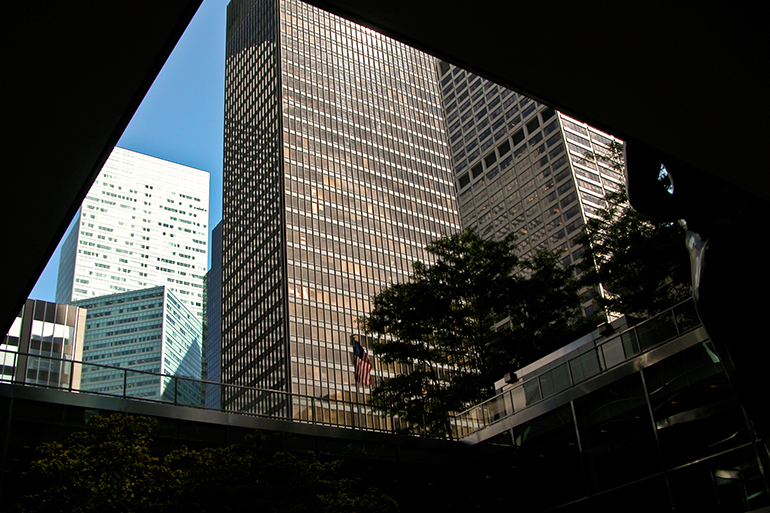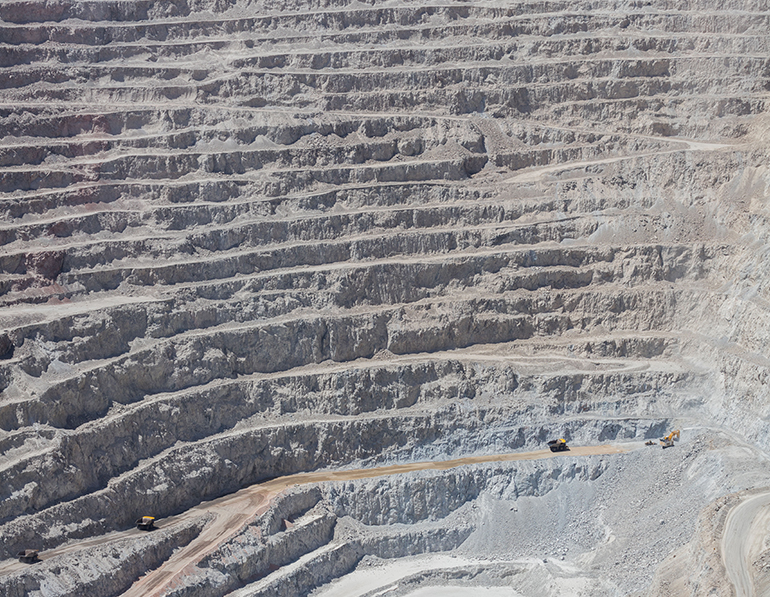
We are celebrating 15 years — and counting — of stories that are deeply researched and deeply felt, that build a historical record of what the city has been.
We are celebrating 15 years — and counting — of stories that are deeply researched and deeply felt, that build a historical record of what the city has been.
Where does a building begin? As much as we are used to placing the origins of architecture within the mind of the architect, a building is also the endpoint of vast, geophysical processes that start in the heart of the sun. The material composition of New York City is a metabolic product of our nearby star: solar energy fuels tectonic motions that create minerals and metals, and drives the ecological dynamics upon which living things depend — and from which modern architecture has extracted so much. Viewed from this perspective, the city’s built fabric implies massive energetic and social consequences. The stuff of our skyscrapers is so often mined and processed by precarious workers under abysmal conditions, leaving behind uneven landscapes of environmental and economic ruin. Images of our glimmering skyline elide the labor of maintaining a perpetual sheen. Meanwhile, recent reports have indicated that buildings account for nearly 90 percent of the city’s energy consumption, and about 68 percent of its total greenhouse gas emissions.
In order to mitigate these so-called “externalities,” could architects visualize the cost of building as much as buildings themselves? What is the true relationship between figure and ground when we’re talking about the actual ground? Below, Kiel Moe brings architecture down to earth. Through a series of drawings and photographs taken from his forthcoming book Unless: The Seagram Building Construction Ecology, Moe disassembles an iconic Manhattan skyscraper into its raw matter, tracing an extended geography of extraction across the thin crust of a planet in peril.
Architecture is traditionally described as either a cultural object or technical act. Yet both modes are directly related to the manifold ecological and social degradations that result from and through the process of building. Architecture will remain detached from the salient ecological and social dynamics of this century if we continue to understand it in the same limited ways. Novel descriptions of the terrestrial basis of building offer new insights into how architecture can otherwise engage these key dynamics.
To describe the terrestrial dynamics of building requires explicit methods. On one hand, this includes a rigorous ecological account. Howard T. Odum’s “emergy” method provides our most comprehensive picture of both the material and incorporeal web of relations that presuppose building. Starting from the sun and geology, this method tracks all the energetic and material transformations that result in a product or process, like building, and how that complex of matter and energy feeds back into the world. According to this method, all energy is traced back to the sun, which fuels 98.6 percent of the planet’s energy dynamics — the energy that drives all human and nonhuman processes. Similarly, materials are traced back to their solar and geological sources. This deep description of the material and energetic basis of architecture goes far beyond other methods, such as life cycle assessment, in reflecting the physical basis of building as a terrestrial phenomenon. When applied to architecture, this method is known as “construction ecology.” Construction ecology describes the physical constitution of building.
As it turns out, the eco-systemic mapping and accounting of material and energy exchanges associated with building is a robust basis for a parallel description of architectural practice as embedded in world-systems. This helps us describe the political constitution of building. Whereas architecture’s politics are often interpreted in a symbolic realm of meaning and significance, the physical matrix of labor, extraction, and development is a very literal instantiation of architecture’s politics, rarely entering architectural discourse even as it is inextricable from design and building. The material and energy flows of a construction ecology typically reveal processes of asymmetric and unequal modes of exchange, posing pointed political and social questions. Unequal ecological and economic exchanges tend to accumulate resources and wealth into global capitals through architecture, always at the cost of the extractive hinterlands and peoples on the other side of that exchange.[1] As part of building’s terrestrial dynamics, we can and should describe how building in one part of the world literally displaces environmental loads to other parts of the world.[2] We can become newly aware of how people and places around the world are structurally under-developed as global capitals become arguably over-developed.[3] If we continue to neglect these social and political dimensions of building, we will continue to make the future a colony of the present.
With explicit methods for describing the physical and political constitution of building, terrestrial architecture is a unified account of what a building actually is and does on the very thin crust of this planet. Consider, for instance, the Seagram Building in New York City. One could select any building to discuss the terrestrial dynamics of architecture, but unpublished documentation of this seemingly well-known building offers specific and compelling evidence for it as a terrestrial architecture. Its status as an important “trophy” building — sited in a global capital of global capital — further helps articulate the asymmetric relationships that accompany building as terrestrial activity in a capitalist paradigm.
An inventory of the social and ecological dynamics that occurred through the production of this most modern of modern buildings helps explicate how architecture has externalized its own terrestrial basis. Architecture’s modernist preoccupation with abstraction and minimalism always bore with it a propensity for detachment and disenchantment. Think about how the modernist obsession with structure — the aspect of architecture that literally couples building to its earthly foundations — was abstracted to a degree that great masses of bulk materials were not otherwise connected to the planet at an ecological scale. The materials that constitute a modernist steel and concrete structure were considered only for their gravity and wind loads, not their terrestrial loads. This externalization, and displacement, of environmental loads inevitably impacted other people and places. A building enclosure’s brass extrusion has as many geophysical and geopolitical properties as it does structural properties. (Although routinely referred to as a bronze building by architectural historians, the enclosure of the Seagram Building is actually brass and is annually oiled to maintain a bronze appearance.) Building enclosures also enclose — in terms of resource appropriation, labor sublimation , and unequal exchanges — far-flung people and places. These environmental and social loads are literally a part of architecture; they are inseparable from the design of building. Gaia is in the details of the details of architecture.
The literal and immense resources involved in building require a new interpretation today. Properly construed, immense resources could ultimately be deployed toward saner ecological and political outcomes. The immense material, labor, and energy required of any building ought to be comprehended and deployed with the aim of architecture maximizing its impact on the environment and society in positive and mutually-reinforcing ways. A more terrestrial description of what building is, and could be, is both integral and methodologically necessary to a type of terrestrial solidarity that could begin to address the environmental and social storms of this century.
All images by Kiel Moe unless otherwise noted.
Arghiri Emmanuel, Unequal Exchange: A Study of the Imperialism of Trade (New York: Monthly Review Press, 1972).
Alf Hornborg, Global Ecology and Unequal Exchange: Fetishism in a Zero-Sum World (London: Routledge, 2011).
Stephen G. Bunker, Underdeveloping the Amazon: Extraction, Unequal Exchange, and the Failure of the Modern State (Chicago: University of Chicago Press, 1988).
The views expressed here are those of the authors only and do not reflect the position of The Architectural League of New York.

